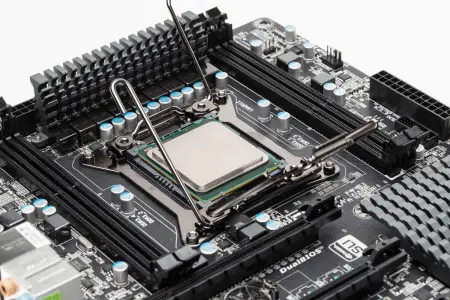CPUs and GPUs are integral components of any computer device. Without these components, a PC is as useless as a head without a brain. However, both have different functions that this article seeks to highlight.
Summary Table
| CPU | GPU |
| Carries out program instructions from various applications | Responsible for rendering 2D and 3D images displayed on the computer |
| Can perform multiple tasks | Specializes in image rendering |
| Considered the brain of a computer | Complements the CPU in performing complex calculations |
Descriptions

A CPU, or central processing unit, is the electronic circuitry inside a computer responsible for interpreting and carrying out instructions of the software and hardware installed in a computer. A CPU performs mathematical, logical, and input/output operations in order to execute these operations.
Aside from desktop computers, a great number of electronic devices rely on CPUs such as smartphones, laptops, tablets, and other “smart” devices. Popular desktop and server CPU manufacturers include Intel and AMD, while NVIDIA, Apple, and Qualcomm are leading makers of smartphone and tablet CPUs.
The main function of a CPU is to execute a program, which is a series of stored instructions. These instructions are stored in a computer memory. Almost all CPUs, regardless of form, follow the instruction cycle (i.e. fetch, decode, and execute). Once an instruction cycle is completed, the whole process starts over with another instruction cycle fetching the next command. More powerful and complex CPUs can perform multiple instruction cycles simultaneously.

A GPU, or graphics processing unit, is a processor responsible for the graphical display output for monitors. It renders animations, images, and videos for the computer monitor. GPUs are commonly used in computers, video game systems, and even smartphones. They can be built into the computer’s motherboard, on separate video cards, or integrated in the same chip with the CPU.
Generally speaking, A GPU can calculate or render two types of images – 2D and 3D. Two-dimensional images from applications such as desktops screens or word processing programs are rendered by the GPU. Today’s GPUs are so powerful that they can render high-quality 2D images regardless of whether the GPU is low-end or high-end.
A GPU is able to carry out parallel operations. While it is used for 2D data, a GPU also plays a critical role in smooth decoding, rendering, and delivery of 3D animations and video. More sophisticated and powerful GPUs can deliver higher resolutions and smoother and faster motion when playing games and movies. In addition to simulating 3D environments, applications such as technical and design tools (e.g. CAD) make use of the GPU. In GPU computing, GPUs work with CPUs to perform complex operations in deep learning, engineering applications, and analytics. Leading GPUs in the market are made by AMD, Intel, and nVidia.
CPU vs GPU
So what’s the difference between a CPU and GPU?
Both are important components in computer devices with varying but equally critical functions. The term “CPU” stands for central processing unit, and is responsible for carrying out program instructions from installed software and hardware. From pulling up a native calculator app to managing multiple application windows, it all goes through a computer’s CPU.
A GPU, or graphics processing unit, is a processor that performs complex calculations to render animations, images, and videos displayed on the computer screen. The GPU was developed to “relieve” the CPU of various functions, particularly in performing complex calculation involved in image rendering. This is why a CPU can perform functions specific to a GPU, but at a slower rate. In contrast, a GPU cannot perform functions a CPU can.
Video
Check out this video for more about CPUs and GPUs.





